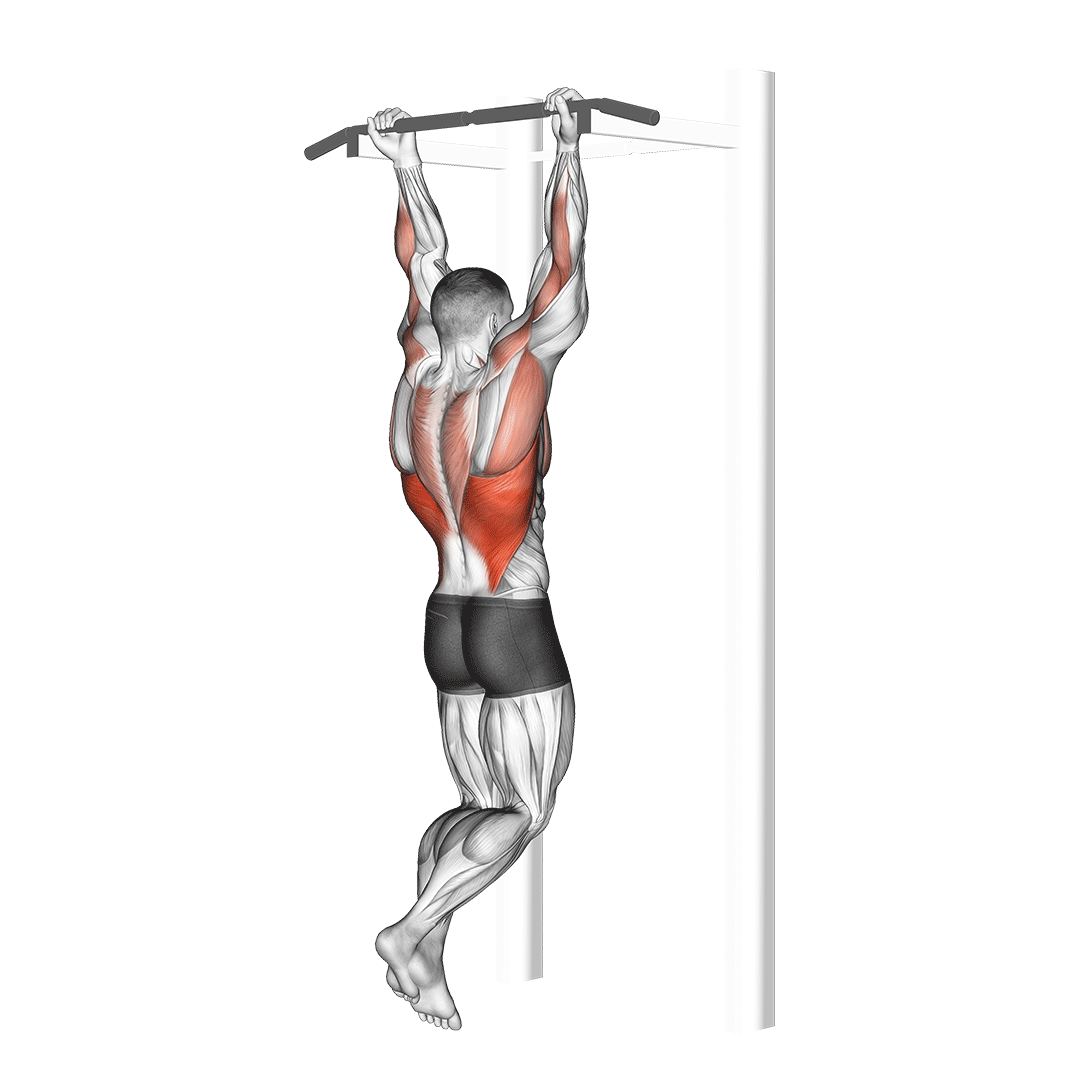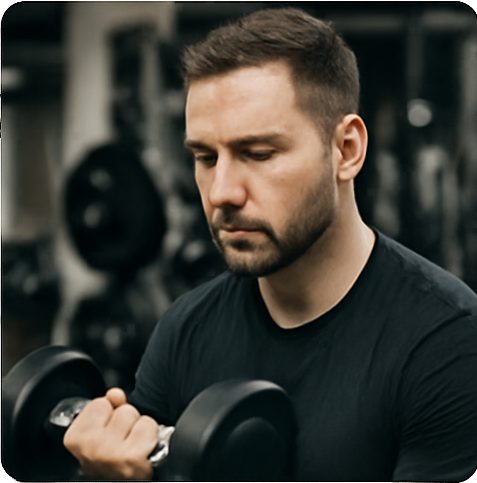When I first got serious about bodyweight training, I kept running into the same debate: chin-up vs pull-up — which one is better?
Some people swore that pull-ups were the ultimate test of upper-body strength. Others argued chin-ups hit more muscle groups and were better for beginners. Chin-ups use a palms-facing-you grip and hit more of your biceps and forearms, while pull-ups use a palms-away grip and really target your upper back. At the time, I just wanted to get stronger overall and build a well-rounded upper body, so I figured… why not try both?
I didn’t follow a fancy program. I just rotated the two every few sessions, tracked my reps, and paid attention to how each one felt. It didn’t take long to notice some key differences — not just in how hard they were, but in where I felt them working.
Chin up Vs Pull Up: What I Felt and Noticed
Chin-Ups

Chin-ups felt more natural right out of the gate. The underhand grip gave me more control, and I could really feel my biceps and front shoulders doing a lot of the work. Honestly, that felt good — like I was actually accomplishing something without grinding through every rep.
They were smoother on my elbows and wrists too—especially once I switched to using my own chin up bar. I didn’t get that stiff, awkward tension I sometimes felt with pull-ups. Within a few weeks, I was able to go from 6–8 reps to 12+ reps without changing much else in my routine.
If you’re looking to build confidence or get volume in, chin-ups are an easy win.
Pull-Ups

Pull-ups were a whole different beast. The overhand grip made them way harder from the start — not just on my arms, but on my grip and shoulders too.
But here’s the thing: every rep felt like I was working deep into my lats and upper back. It was tougher to progress, sure, but they gave me this raw, stripped-down kind of strength. I really had to pay attention to my form, keep everything tight, and breathe right just to get a clean rep.
They weren’t as easygoing as chin-ups, but once I figured them out, they felt way more rewarding. Pull-ups gave me that solid “posterior chain” strength that chin-ups just didn’t hit in the same way.
That was my first real takeaway: both movements had strengths, and they trained my body differently. From that point on, I stopped trying to pick a winner — and started using both with intention.
That was my second real takeaway: I remember seeing a lot of programs recommend weighted pull-ups for overall strength. At first, I wasn’t sure why not chin-ups. But after doing both, I get it — pull-ups load the lats and upper back more directly, especially when adding weight. They just feel more stable under heavy load.
What Each Was Better For (From My Training)
I started noticing certain patterns depending on what kind of training I was doing. Whether I was hitting circuits, adding weight, or just doing burnout sets, each variation had its moment.
Here’s how it broke down for me:
| Goal | Better Option | Why |
|---|---|---|
| Arm & Biceps Growth | Chin-Up | My biceps were lit up after every session. Great for arm volume. |
| Back Strength | Pull-Up | Pull-ups hammered my lats, traps, and scap control. Felt solid. |
| Posture Improvement | Pull-Up | Holding strict form trained my back and core to stay upright. |
| Conditioning | Chin-Up (slight edge) | Easier to rep out and recover from, especially in circuits. |
| Grip & Core Strength | Pull-Up | Weighted pull-ups smoked my grip and made my abs sore. |
When I did supersets or circuit-style training, chin-ups were my go-to — they were easier to repeat and didn’t crush my recovery. But for heavy sets or strict form days, pull-ups won. I could feel every part of my upper back working harder.
If I had to be real:
- Chin-ups were more forgiving and bicep-friendly, but didn’t isolate my back as much.
- Pull-ups felt more demanding, but more rewarding for overall strength.
What I Do Now (Balanced Takeaway)
These days, I don’t pick sides — I use both chin-ups and pull-ups depending on the goal.
On heavy days, I load up pull-ups. They hit my back hard, challenge my grip, and give me that full upper-body tension I’m looking for. If I’m doing weighted work
On volume or arm-focused days, I switch to chin-ups. They’re easier on my elbows, pump up my biceps, and I can do them in circuits or supersets
My Training Log
To give some context, here’s what my upper body pulling days usually look like:
| Day | Exercise Focus | Movement Examples | Notes |
|---|---|---|---|
| Monday | Weighted Pull-Ups | 4 sets of 4–6 reps | Focus on strength, full ROM, core tight |
| Tuesday | Push + Core | Dips, Overhead Press, Hanging Leg Raises | Light back-off day |
| Wednesday | Chin-Up Volume | 5–6 sets of 8–12 reps | Arm and upper back pump |
| Thursday | Rest or Light Cardio | Walk, light rower, stretching | Recovery focus |
| Friday | Mixed Supersets | Pull-Ups + Rows, Chin-Ups + Curls | Conditioning and endurance |
| Saturday | Weighted Chin-Ups | 4 sets of 5–8 reps | More biceps focus |
| Sunday | Rest | - | Full rest |
I cycle between heavier pull-up days and lighter chin-up days. Chin-ups feel easier to recover from, and pull-ups give me more of that back-thickness soreness the next day.
If you’re just starting out, chin-ups might feel more natural. But if your goal is pure back and upper body strength, don’t skip pull-ups. I learned that both have their place — and switching between them kept my training fun and balanced.
Related Articles:
Assisted Pull-Up Machine Solve Pull-Up Hand Pain
6 Best Grip for Pullups I Tried

Hi, I’m the editor here at Leadman Fitness. We’re a manufacturer focused on producing top-quality barbells, plates, kettlebells, dumbbells, and strength training gear. I’ve been into sports and fitness for years, and I know my way around all kinds of gym equipment—both from using it and helping create it.
I spend a lot of time understanding the real problems people run into in the gym—whether it’s beginners trying to pick the right gear or experienced lifters looking for something more durable. I stay in close touch with our production team and talk directly with other equipment makers, so we’re always improving based on what real lifters and coaches are looking for.
What I share comes from hands-on experience—stuff that actually helps people train better, not just in theory, but in real gyms.
